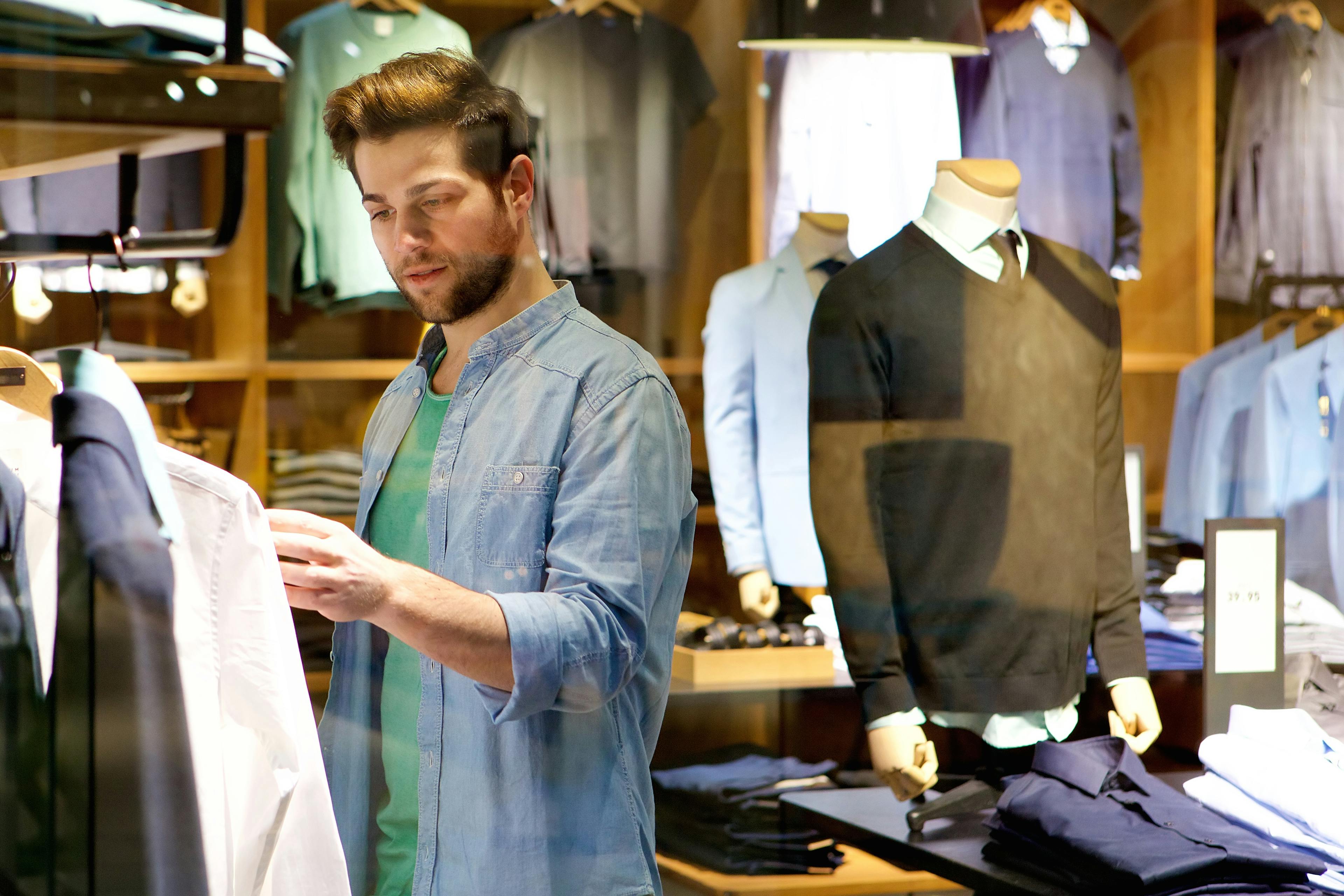6 Differences Between E-Commerce & Brick-and-Mortar Stores

Both brick-and-mortar and e-commerce businesses are often shoved into the same classification of retail. After all, to shoppers, it's all just "shopping." However, there are many nuances to each shopping mode, and as retail evolves, it's essential to stay up-to-date with these differentiating factors.
While online and in-person shopping have similarities, a few key differences are worth understanding if you plan to launch a retail business. The lines between the two are blurring, with omnichannel retail being more bullish than ever. Here's what you need to know now.
READ MORE: Apps, Media, & Monetization: Integrating Mobile Commerce
1. Locations
Understandably, one might conflate brick-and-mortar business and e-commerce since both involve strategies to move products and services. The most significant differences may be in the ways the items are sold.
E-commerce operations don't necessarily include a physical storefront, particularly when they begin. Instead, these "digital natives" sell products online through a website and virtual shopping cart. Orders are entered remotely, and the goods are mailed to the customers.
Brick-and-mortar businesses, by contrast, have physical locations. They might consist of a single outlet or a chain of stores. However, more and more brick-and-mortar businesses are adopting e-commerce platforms, merging the two to create a seamless shopping experience for their targeted audiences.
Moreover, many direct-to-customer (DTC) brands are increasingly opening stores. Even digitally-native brands are exploring stores as an affordable customer acquisition channel in the digital age to scale most profitably. An example of one such brand is the apparel retailer UNTUCKit. The brand started online but has since expanded its physical footprint to remain competitive and relevant to savvy shoppers.
READ THE CASE STUDY: How DTC Brand, UNTUCKit Drives Conversion In Physical Stores
2. Payment Flexibility
In the past, e-commerce has bested brick-and-mortar on the payment front by accepting mobile payment (like Apple Pay and financing apps like Klarna and PayFlex). However, physical retail has caught up! Now, shoppers can conveniently pay in stores with these channels. This was accelerated by the COVID-19 pandemic when most stores did not accept cash for safety reasons, so much so that Deloitte declared, "Cash is no longer king."

However, post-pandemic, cash is now largely accepted once more. This means that physical stores offer more payment flexibility than their online counterparts. In stores, shoppers can pay with their cards, phones, smart watches, or cash, whereas online shoppers cannot use cash on their favorite e-commerce sites.
3. The Rise Of Omnichannel Retail
Most retail businesses have adopted an omnichannel focus, which means they can connect with shoppers through more than a single channel or shopper touchpoint. They can send out SMS or app push notification, contact you by email, provide information via their website, or chat with you via customer service representative or website chatbot. Brick-and-mortar retailers have traditionally faced the challenge of competing with the convenience and personalization of online shopping.
Historically, e-commerce has led the charge with regard to reaching customers online. But, in recent years, brick-and-mortar has invested heavily in order to deliver this same offering (plus a physical location). For example, many retail brands use an omnichannel approach to drive their loyalty programs, allowing shoppers to benefit wherever they buy!
Moreover, artificial intelligence (AI) has helped retailers offer this flexibility more easily. Generative AI presents an exciting opportunity for physical stores to bridge the gap and offer novel, engaging experiences to customers. In a recent blog, we explain why retailers should be paying attention to AI. AI can help both e-commerce and physical retail businesses provide personalized product recommendations, virtual try-on experiences, and engaging, interactive visual displays. Retailers embracing and harnessing the power of generative AI stand to thrive in the ever-evolving retail landscape, redefining what physical stores can achieve.
READ MORE: How Advanced Analytics Empower Multi-Brand Retail
4. Customer Attention & Engagement
A prime challenge for e-commerce organizations has been how to deliver a personalized experience to every consumer. Representatives not physically present while people are shopping, even though they're effectively just an email, phone call, or chatbot away. Consumers tend to crave instant gratification, which means they'll often abandon a cart whenever they have a question rather than wait (or worse, have to search) for a response. Now, however, e-commerce retailers can more easily achieve personalization through the use of cookies on their websites and apps.
Brick-and-mortar shops, on the other hand, have an advantage in being able to provide immediate personalized customer service in stores. Sales associates serve as valuable resources to customers and can help them make product selections, provide recommendations, and troubleshoot issues in real-time. As such, brick-and-mortar retail businesses are increasingly focussing on enhancing the quality of these in-store interactions as they're a key business driver.
RetailNext CEO, Alexei Agratchev, has been quoted as saying, "...an engaged and motivated sales associate doesn’t just drive a modest 10% or 20% or even 30% uptick in sales. We routinely see that when we use proper task-management, learning, and engagement technologies to help sales associates feel connected — to make sure they care — they can drive 3X the sales for any given location, even as traffic, price points, and other factors stay the same."

One thing brick-and-mortar and e-commerce have in common is the sheer volume of data they collect from shoppers. Omnichannel touchpoints allow retailers the opportunity to view full customer journey, even in stores.
5. Operating Expenses
Intuition says that e-commerce expenses are significantly lower than brick and mortar retail, which is one reason so many have started online businesses. However, this is not always the reality.
Pure-play e-commerce retailers have the opportunity to establish a brand identity and generate revenue, which is an advantageous start. However, after an initial period of growth, it can become challenging to remain profitable due to infrastructure costs. Such costs include expensive shipping and return expenses, high acquisition costs for new customers, loss of existing customers to competitors, and increasing expenditures on web hosting.
In recent years, many e-commerce retailers have turned to brick-and-mortar platforms as it is a cheaper alternative, despite additional expenses such as rent, inventory warehousing, employee labor, property taxes, and more.
It is essential to note that e-commerce is not always more expensive than traditional retail, as various factors influence the cost, such as industry segment, market values, marketing campaigns, business plans, and financial skills of the owner. Therefore, depending on your business abilities and industry, one retail platform may be more affordable than the other. However, more and more retailers are adopting both platforms as part of a much larger marketing and operations matrix.
READ MORE: Driving Payroll Efficiency Amid 'The Great Resignation'
6. Data Monetization
E-commerce platforms and brick-and-mortar retailers employ distinct strategies to monetize shopper data, capitalizing on the unique advantages offered by their respective business models. In the realm of e-commerce, the digital landscape enables a granular analysis of customer behavior, preferences, and purchase history. Online retailers can leverage sophisticated algorithms and machine learning models to discern patterns, predict future trends, and personalize marketing efforts with remarkable precision. This level of data granularity allows e-commerce platforms to implement targeted advertising, recommendation engines, and dynamic pricing strategies, optimizing the overall shopping experience and maximizing revenue.
In contrast, brick-and-mortar retailers may face a more traditional environment, relying on customer loyalty programs, in-store analytics, and point-of-sale data to gather insights. While some more traditional physical stores may lack the depth of digital analytics, they compensate by fostering in-person relationships and utilizing location-based strategies such as in-store promotions and exclusive events. That being said: the tide is shifting. Physical retailers are turning to in-store analytics technologies to help them better understand the inner workings of their stores, enabling them to streamline and optimize store operations and performance.
Both e-commerce and brick-and-mortar retailers seek to monetize shopper data, but their approaches reflect the nuances inherent in their respective operational frameworks. If you're interested in learning more about this, have a look at our most recent data monetization video series on YouTube.
When it comes to choosing the right business platform for your new company, the debate between brick-and-mortar and e-commerce retail can be complex. It is essential to assess both options thoroughly and consider all the factors involved. Ultimately, the decision you make should prioritize the best interests of your shoppers. Therefore, it is recommended to conduct market research and analyze your target audience's behavior and preferences before concluding on the most suitable business platform.
Advancements in technology now mean that these two platforms are fast-becoming inseparable. Shoppers are looking for seamless cross-platform retail experiences, so businesses will have to strategize with this in mind as they look to the future.
READ MORE: Understanding 'Hyperphysical' Luxury Retail
About the author:

Ashton Kirsten, Marketing Communications Coordinator, RetailNext
Ashton holds a Master's Degree in English and is passionate about starting conversations through impactful content and executing data-driven creative strategies. She is based in Johannesburg, South Africa, where she can be found reading, writing and researching.